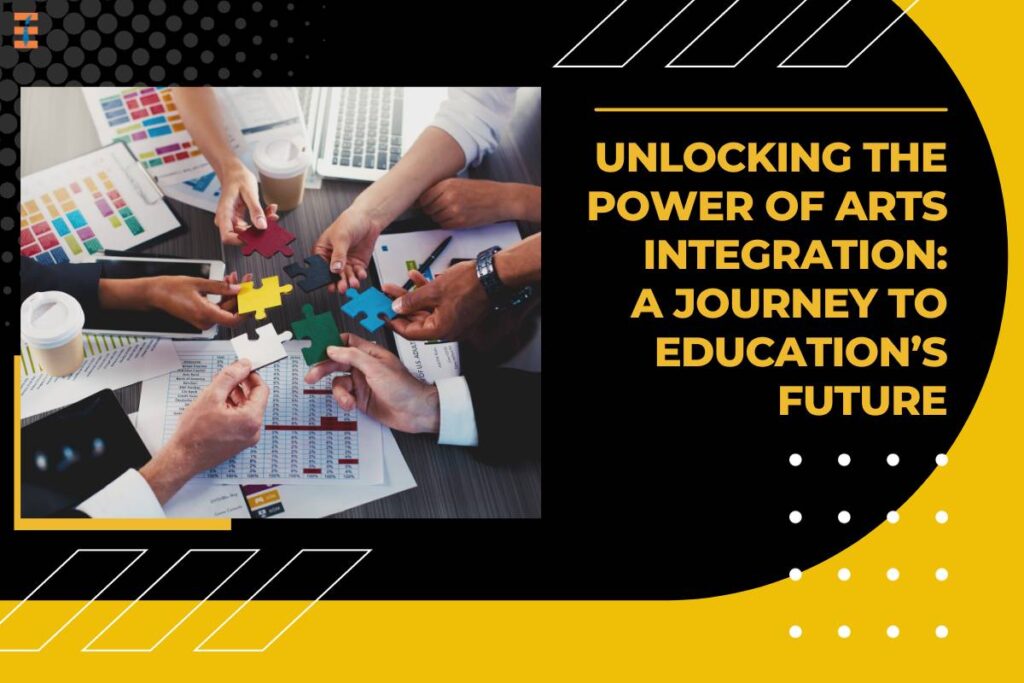In the ever-evolving landscape of education, one innovative approach is gaining prominence for its potential to redefine the learning experience and transform the very fabric of schools. Arts integration, a pedagogical method that seamlessly weaves the arts into traditional academic subjects, is breaking down the boundaries between creativity and learning. This article delves into the concept of arts integration and its profound impact on reshaping a school into a haven of creativity, critical thinking, and lifelong learning.
Understanding Arts Integration
It is an educational philosophy and practice that seeks to meld the arts—comprising visual arts, music, dance, theater, and more—with conventional academic subjects like math, science, language arts, and social studies. The primary goal is to create a more holistic and engaging learning experience by combining artistic and intellectual elements. This approach transcends traditional disciplinary silos, fostering an environment where creativity becomes a vital tool for understanding and engaging with knowledge.
Key principles of arts integration include:
1. Collaboration

Teachers and artists collaborate to design and implement lessons that seamlessly merge arts with the curriculum. This joint effort ensures the fusion of artistic and academic elements into a coherent whole.
2. Active Learning
Arts integration emphasizes experiential learning, where students actively engage with the subject matter. Instead of passive absorption, students become active participants in the learning process.
3. Multisensory Engagement
The arts appeal to multiple senses, offering an immersive learning experience. Students can see, hear, touch, and move to explore and internalize complex ideas.
4. Creative Expression
It empowers students to express themselves creatively through various artistic forms. This self-expression enhances their understanding of academic concepts.
5. Interdisciplinary Connections
This approach encourages students to uncover the interconnectedness of academic subjects, promoting a holistic worldview.
6. Diverse Perspectives
Arts integration provides a platform to explore diverse perspectives, encouraging inclusivity and empathy.
7. Personal Growth
Students benefit from arts integration by gaining self-confidence, improved problem-solving skills, and a lifelong appreciation for the arts.
Also Read: 12 Powerful Effects of Drawing on Learning
The Transformative Power of Arts Integration
Arts integration offers transformative potential to enhance the educational experience for both students and educators alike:
- Enhanced Learning Engagement: It captures students’ imagination, igniting curiosity and interest in academic subjects. It keeps them engaged, motivated, and actively participating in their education.
- Boosted Creativity: The arts are natural incubators for creativity. It nurtures creativity and innovation, extending their impact to other areas of learning.

- Improved Academic Achievement: Numerous studies have shown that students exposed to arts integration perform better in standardized tests, thanks to a deeper comprehension and retention of complex subjects.
- Fosters Critical Thinking: It invites students to analyze, evaluate, and synthesize information, enhancing their critical thinking skills.
- Cultivates Inclusivity and Empathy: The arts provide a platform to explore diverse cultural perspectives, creating a more inclusive and empathetic learning environment.
- Strengthens Interdisciplinary Connections: Students develop a more profound understanding of how different subjects are interconnected, which is crucial for real-world problem-solving.
- Promotes Personal Growth: It enhances students’ self-confidence, creativity, and problem-solving skills, preparing them for success in the 21st century.
Arts Integration in Action
To comprehend the transformative potential of arts integration, let’s explore how this approach can be applied to various academic subjects:
- Math: In a math class, students might employ music to explore patterns, rhythm, and fractions. They could create musical compositions based on mathematical sequences or use dance to visualize geometry and spatial concepts.
- Science: Science lessons might incorporate visual art projects to illustrate scientific principles or conduct experiments through movement and dance. Theater can be used to role-play scientific processes and historical figures, making science come alive.
- Language Arts: Literature and writing can be brought to life through theater performances, storytelling, or the creation of visual art that reflects the themes and characters in a text.
- History and Social Studies: It provides a dynamic platform to explore historical events, cultural traditions, and social studies. Students can use music and dance to understand the context of historical occurrences, engage in dramatic reenactments, or create multimedia presentations that blend visual and performing arts with historical research.
- Physical Education: Arts integration isn’t confined to traditional academic subjects; it can also enliven physical education classes. Dance, theater, and visual arts can be incorporated to explore movement, body awareness, and self-expression.
Benefits of Transforming a School through Arts Integration
A school that embraces arts integration can expect an array of benefits:
- Enriched Learning Experience: It makes learning more engaging and memorable, enhancing the overall educational experience for students.
- Improved Academic Achievement: Students tend to perform better academically when learning through the arts, as it helps them grasp and retain complex concepts.
- Fostering Creativity: It nurtures students’ creativity, making them more innovative problem solvers and critical thinkers.

- Inclusivity and Empathy: The arts provide a platform to explore diverse cultural perspectives, fostering inclusivity, empathy, and a global outlook.
- Real-World Relevance: Interdisciplinary connections developed through arts integration prepare students for real-world problem-solving and critical thinking.
- Personal Growth: It enhances students’ self-confidence, creativity, and problem-solving skills, preparing them for success in the 21st century.
- Community Involvement: Schools that embrace arts integration often find that the approach strengthens community bonds and fosters a sense of pride in the school’s achievements.
Conclusion
In conclusion, arts integration is more than a teaching technique; it’s an educational philosophy with the power to enrich learning experiences, foster creativity, and prepare students for success in an ever-evolving world. By bridging the gap between creativity and learning, it transforms a school into a vibrant hub of inspiration and innovation, where students and educators alike thrive in an environment that celebrates the arts and their critical role in education. As schools continue to seek innovative approaches to education, arts integration stands as a beacon of transformative potential, offering a promising path toward a brighter educational future.










